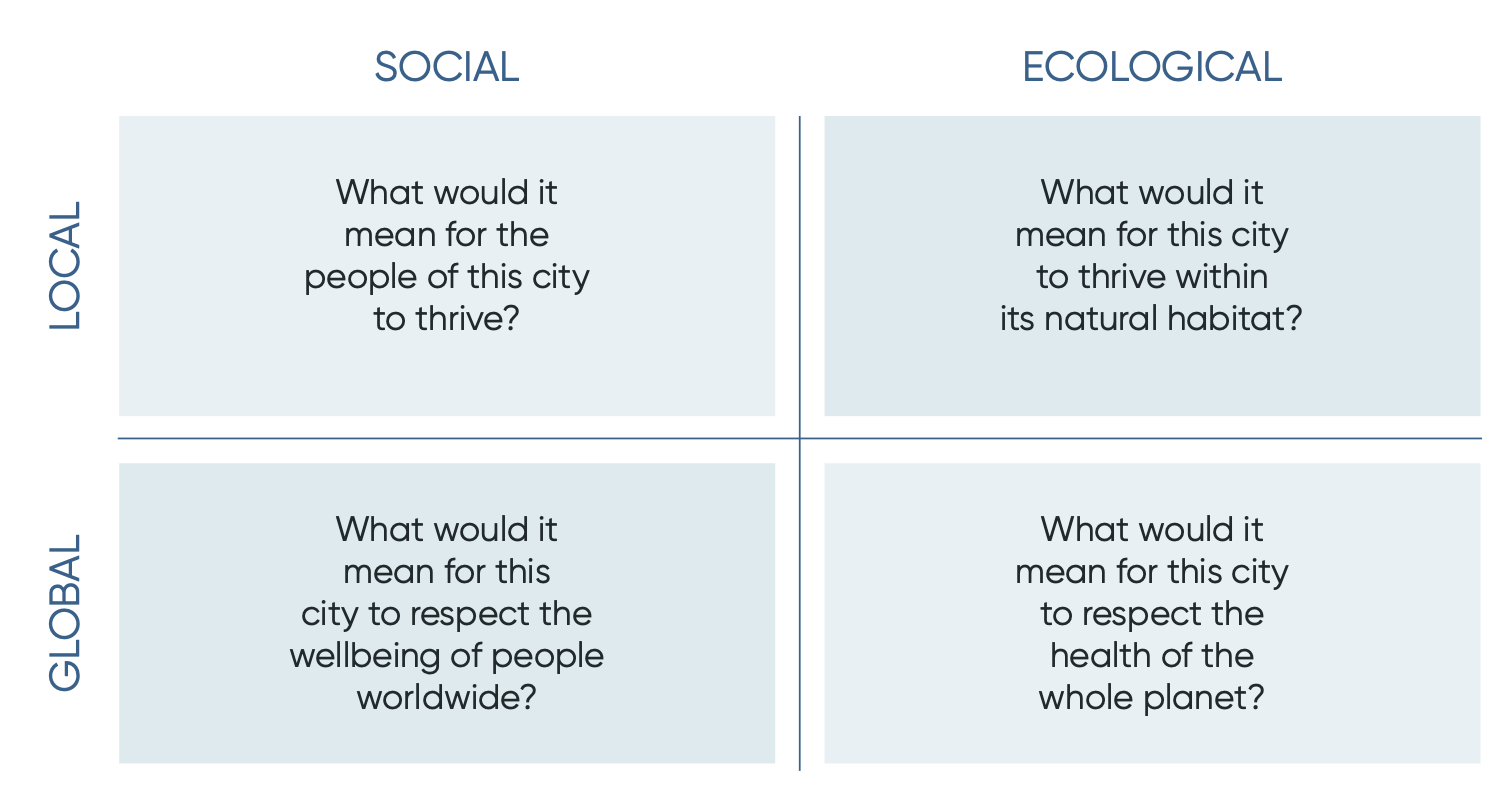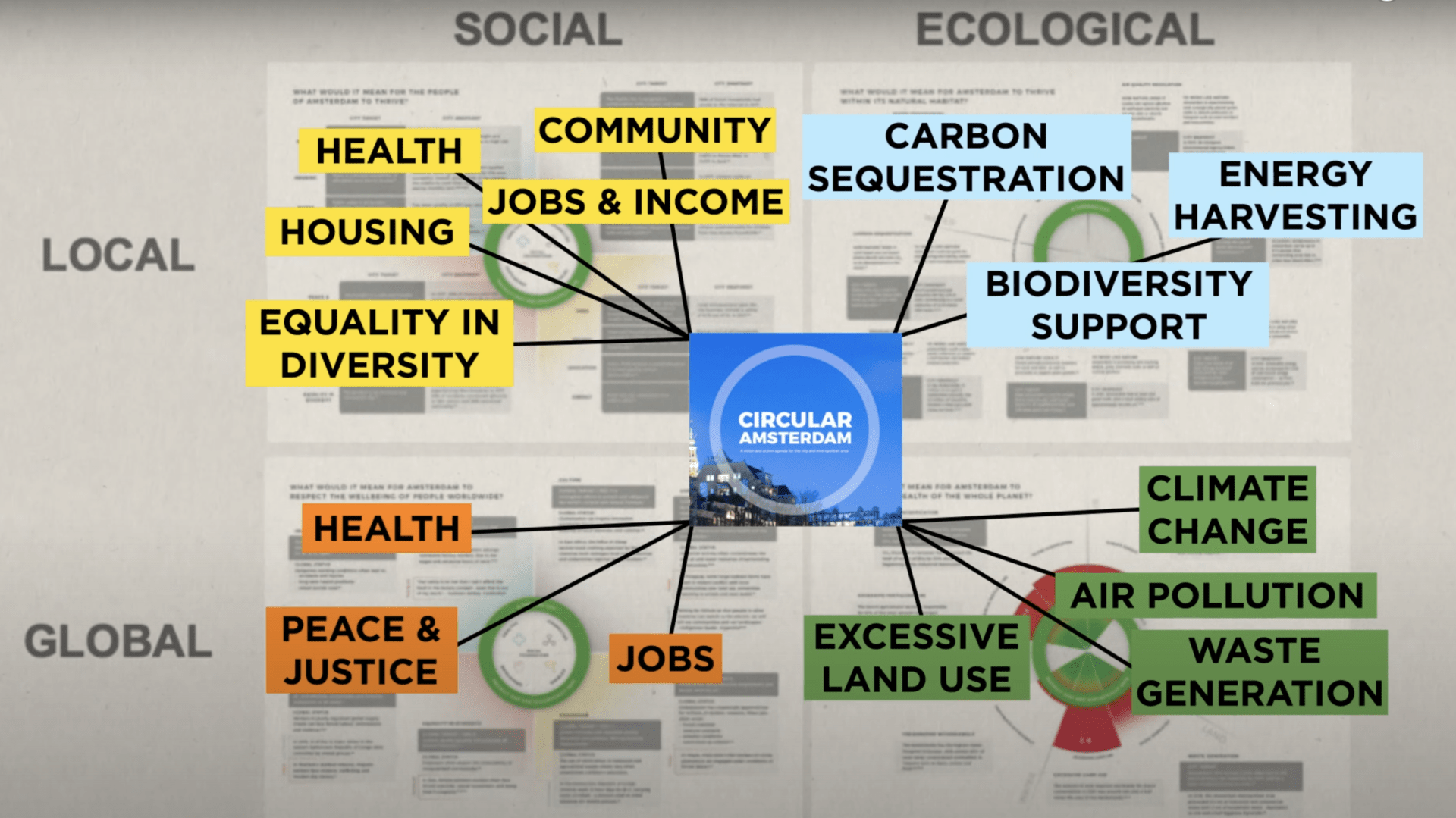Downscaling the doughnut for cities
We already covered some of Amsterdam’s plans towards a doughnut economy but this concept, or otherwise the circular economy, are important parts of how cities can be transformed into Fab Cities, so it’s worth another visit. The DEAL (Doughnut Economics Action Lab) have launched An introductory guide to downscaling the doughnut which explains why and how the planet-wide concept can be scaled to a city. The guide starts with a great short (11 mins) video about downscaling the doughnut to the city. You should have a listen but here are some key parts of how we can meet the needs of all people within the means of the living planet.
Think of it as a compass for human prosperity in the 21st century and the goal here is to leave nobody falling short in the hole in the middle of the donut falling short on the essentials of life like food water health care housing political voice social equality so get everybody over the social foundation into the green ring of the donut itself but at the same time don’t overshoot its ecological ceiling because there we put so much pressure on the life supporting systems of this delicately balanced planet that we push her out of balance we cause climate breakdown we acidify the oceans we create a hole in the ozone layer and critical loss of biodiversity.
First step in the process: a portrait of the city through four lenses.
- What would it mean for the people of this city to thrive?
- What would it mean for this city to thrive within its natural habitat?
- What would it mean for this city to respect the wellbeing of people worldwide?
- What would it mean for this city to respect the health of the whole planet?

What would it mean for your city to truly belong within its natural habitat what if your city were as generous and resilient as the wild land next door be it a forest a savannah or a wetland how could your city’s landscapes and green scapes pavements and rooftops be designed to sequester as much carbon dioxide as the forest next door, to store as much groundwater after storm to house as much biodiversity or to cool as much air as the forest does from the treetops to the forest floor because the more that your city can match the generosity of the living world in which it’s embedded the more it can become resilient and thriving as a place to live.
So people in the city, nature around and in the city; then people of the world and collective impacts on nature around the planet.
Then this mapping can be turned into a “selfie” where citizens come together to form a portrait of where they are today, following these same quadrants.

[By plotting onto the portrait all the initiatives and policies and strategies that are underway to bring that transformation about looking for the deep interconnections between the social and ecological the local and global lenses that create the synergies that are needed bringing to bear the visions and the values that people in the city hold dear for what they think will be a thriving future for themselves bringing in voices lived experience of city histories and stories from different communities showing the diversity of experience and life in the city and then highlighting initiatives that could be taken now.
The guide then suggests nine ways of turning this portrait into transformative actions. The Nine Ms.
- Use the portrait as a mirror reflecting the current status of the city and its impacts worldwide.
- Turn it into a mission, create a compelling vision of what thriving means for the city and what it can become.
- Use the portrait to mobilize city change makers and stakeholders who are ready to drive that transformation onto the portrait.
- Map the existing policies and initiatives that are already taking the city in the direction it wants to go.
- Let it inspire a holistic mindset backed up by the values and ways of working that are needed to turn this into reality.
- Connect it with other methods that are already in use to bring about change.
- Use it to build momentum through an iterative process of action and reflection.
- Monitor how and where the city is making progress or not into getting into the doughnut.
- MMM…! make it irresistible be creative have fun share learning and share success.
Other than the video summarized above, there’s a quite detailed PDF guide you can download in multiple languages, a portrait and webinars of the Amsterdam project, and canvases and diagrams to get going with this method. An excellent resource to explore this way of seeing the planet and our cities.
